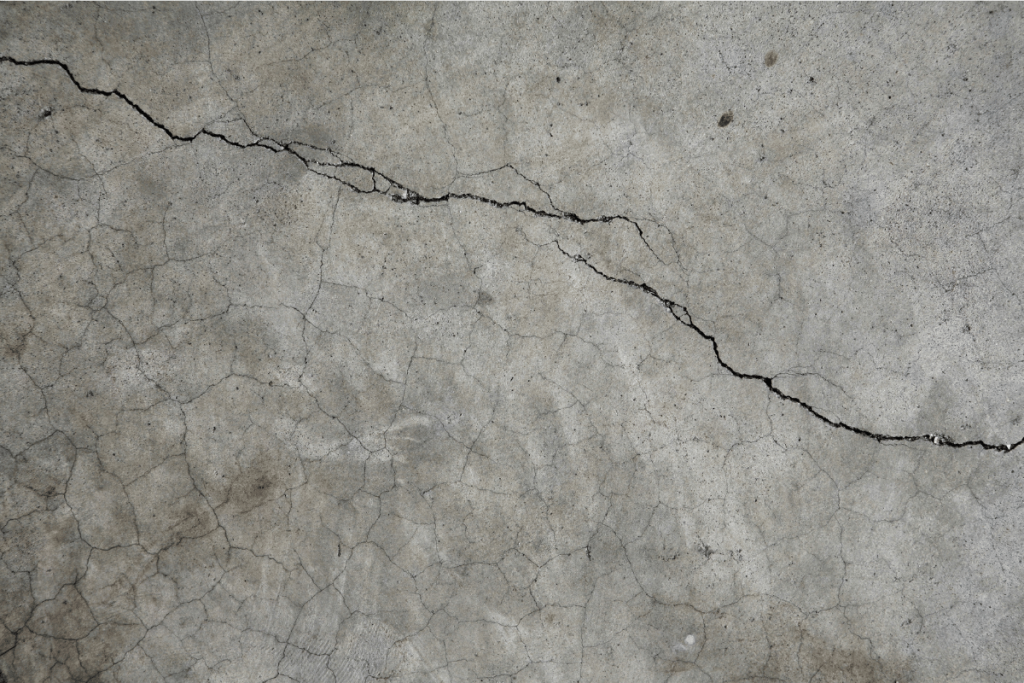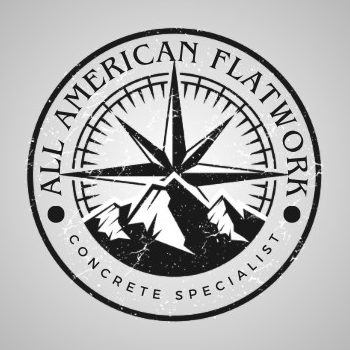When you pay for a new concrete slab—whether it’s a driveway, patio, or foundation—you expect it to last a lifetime. But not all contractors deliver on that promise. Too often, flaws in concrete pours don’t show up until weeks or even months later, leaving homeowners frustrated and out of pocket.
Have you ever seen cracks spreading across your newly poured driveway and wondered what went wrong? Or noticed uneven settling in your patio that happened far too soon? These are red flags that something went off track during the build. In this post, we’ll break down the most common signs of a poor concrete job, explain why they happen, and guide you on how to address them before they cause real damage.
Let’s start learning how to detect a bad concrete pour before it’s too late.
Common Warning Signs of a Bad Concrete Job
1. Poorly Built Concrete Forms
If the forms aren’t square or level, the slab ends up uneven. Badly set forms mean edges lean, and water pools. That results in visible slope or standing water—clear signs of a subpar pour.
2. Low-Quality Aggregate or Mix
Using the wrong aggregate or adding too much water weakens the concrete. That leads to cracking signs and a surface that chips or dusts easily. Overly wet mix increases shrinkage and shrink-related cracks.
3. Shoddy Concrete Installation
Rushing the pour or skipping proper vibration leaves voids and air pockets. That causes sinking concrete or uneven surface. Puddles and flaking often follow, showing the slab isn’t solid underneath.
4. Skipped Joints & Poor Curing
Without control joints or proper curing, the slab cracks randomly. Lack of expansion cuts leads to surface splits. And if the slab dries too fast, expect more cracks and weak spots.
Signs of a Bad Concrete Pour
If you spot any of these—especially early—take action. Left unchecked, they can open the door to moisture, structural damage, and costly repairs. Lets take a look at some signs of a bad concrete pour:
1. Cracks That Appear Too Soon
All concrete cracks eventually—but not all cracks are normal. Lets say you just finished pouring a new concrete driveway for your home. If cracks show up in the first few weeks after pouring, especially without a clear joint or pattern, it likely means the slab wasn’t mixed or cured correctly.
What to look for:
- Random cracks in the middle of the slab
- Cracks wider than 1/8 inch
- Spiderweb cracks throughout the surface
Why it happens:
- Poor curing practices
- Wrong mix design
- Lack of control joints
2. Flaking or Surface Scaling
If your concrete surface is chipping or peeling, especially in colder climates, it’s called scaling. This is usually a sign that the top layer didn’t bond well—or that the concrete wasn’t sealed properly.
Red flags:
- Pits or flaking on the surface
- Discoloration near high-traffic areas
- Surfaces that feel rough and crumbly
Possible causes:
- Water added to the mix on-site
- Overworked surface during finishing
- No protective sealer applied
3. Uneven or Sloped Surfaces
A good concrete job should be flat, even, and sloped only for drainage. If water pools or runs toward your home, you’ve got a problem.
Common signs:
- Puddles forming after it rains
- Water pooling near your foundation
- Sudden drops or humps on the surface
Why it matters:
Uneven slabs can cause trip hazards, foundation damage, and long-term erosion.
4. Honeycombing and Voids
Honeycombing looks like exposed gravel or air pockets on the side or bottom of a concrete slab. These voids weaken the structure and suggest improper consolidation.
Look for:
- Small holes or cavities when looking at slab edges
- Exposed aggregate
- Air gaps under the surface
This means:
- The concrete wasn’t vibrated or compacted
- The formwork may have leaked
- The mix may have been too dry
5. Moisture Under the Slab
Excess moisture is a silent slab killer. It can cause cracks, mold, and even damage flooring if the slab is under your home.
Signs of moisture in a concrete slab:
- Efflorescence (white powdery stains)
- Damp spots that don’t dry
- Flooring issues like warping or bubbling
- Musty smells or mold in basements
Tip: Always install a vapor barrier under indoor concrete slabs or garage floors.
6. Signs of Termites in Concrete
It might sound strange—concrete doesn’t attract termites. But termites can move through small cracks or around poorly sealed joints to reach wood structures.
Clues to watch for:
- Mud tubes along expansion joints
- Tiny piles of wood dust near concrete edges
- Hollow-sounding wood where slab meets structure
Prevent this by:
- Sealing cracks
- Treating surrounding soil
- Keeping wood framing elevated above concrete
7. Weak Edges or Broken Corners
Corners and edges should be the strongest part of the slab. If they chip off easily or crumble under pressure, that’s a red flag.
Causes include:
- Poor finishing
- Inadequate curing
- Freeze-thaw damage from no sealer
Prevent this by:
- Using high-strength concrete mix at edges
- Protecting from foot traffic during cure time
- Applying a proper concrete sealer
8. Poor Finishing Techniques
Not all problems show up immediately. But sloppy finishing often leads to long-term issues.
Warning signs of a bad concrete finish:
- Brush marks that are too deep or inconsistent
- Surfaces that feel sandy or weak
- Visible trowel burns or swirl marks
These might seem cosmetic, but they often indicate a lack of skill, rushed work, or poor planning—none of which you want in your foundation or driveway.
Remember, cracking (especially spider-web or settlement cracks) often hints at improper mix, poor curing, or insufficient base prep. Visible voids or honeycombing indicate the concrete wasn’t compacted fully or had too much water in the mix. While scaling, spalling, and surface pitting typically result from weak mix ratios or freeze-thaw damage. Finally, if your concrete blisters, delaminates, or is dry and crumbly, its’ often issues with finishing too soon or poor curing practices.
How to Spot a Bad Concrete Pour Before It’s Too Late
Here’s a quick checklist of what to watch for during and after your project:
| Red Flag | What It Could Mean |
|---|---|
| Cracking early | Bad curing or improper mix |
| Puddling or pooling | Improper slope or leveling |
| Flaking or chipping | Overwatering or no sealing |
| Rough, bumpy finish | Poor trowel work |
| White powder residue | Water intrusion or no vapor barrier |
| Exposed gravel (honeycomb) | Poor vibration or air pockets |
Can a Bad Concrete Job Be Fixed?
Bad concrete jobs can be fixed but it depends on how bad it is. Small cracks or minor unevenness can be repaired with patching compounds, sealers, or grinding. However, big issues like sinking, major cracks, or structural flaws often require removing and re-pouring the slab which can get costly.
Best practice? Call a trusted concrete contractor like All American Flatwork for a full assessment. We’ll evaluate your slab, recommend fixes, and handle the work cleanly and efficiently.
How to Fix a Bad Concrete Job
Whether you decide to go down the DIY route or hiring a contractor, here’s how to fix a bad concrete job or at least start on the right foot:
1. Check and Reinforce the Forms
If concrete forms weren’t set correctly, slabs can bow or leak during pour. Look for bulging edges or uneven lines.
Fix it: Remove poorly placed forms, clean up edges, and reinstall straight, level forms braced every few feet. Then repour the edge or entire section as needed.
2. Improve Aggregate and Mix Quality
Using the wrong ratio of sand, gravel, and cement leads to weak spots—often marked by cracking or chipping. You might spot pop-outs or rough patches.
Fix it: Mill out damaged areas, then patch with a proper mix that uses clean aggregate and water-cement ratio under 0.50. This ensures strength and resilience.
3. Re-Pour Uneven or Sinking Concrete
Sinking slabs on driveways or concrete patios can fail due to voids below.
Fix it: Use slab-lifting methods. Polyurethane foam injection fills voids and levels the slab fast, with minimal tear-up. It’s cheaper than a full replacement and ideal for uneven surfaces near sidewalks or garage entries.
4. Seal Cracks Early
Cracking signs—like hairline or wide cracks—need attention before water and freeze-thaw cycles worsen them.
Fix it: Clean each crack thoroughly then fill with flexible crack sealant or epoxy. For hairline cracks, a good quality cement patch and resealing top it off. Prevent moisture issues and prolong your slab’s life.
How to Avoid a Bad Concrete Job

To avoid a bad concrete job, choose a licensed and insured concrete contractor experienced with a wide variety of services—not just driveways—and insist on seeing photos of their past work. Check that they’ll use the right mix (at least 4,000 PSI), compact the soil base properly, and install correct drainage and control joints to prevent cracking. Walk the site before the pour to catch any missteps early, and get all specs—thickness, mix design, joint placement—in writing. That way, you’ll steer clear of common issues like shrinkage, poor compaction, or slab curling.
Hiring the right contractor is everything. Ask them:
- Do you use rebar or fiber mesh reinforcement?
- How do you cure the concrete?
- Will you seal the surface after pouring?
- Can I see past work or references?
If the answers are vague—or if they can’t walk you through their process—consider that a warning sign.
Pay Attention to the Signs of a Bad Concrete Job
A concrete slab should last decades, not just years. But if it’s installed wrong, you could face expensive fixes, water damage, or safety hazards. That’s where we’re here to help you spot these signs before a
Spot the signs early. Know what to look for. And if you need a reliable concrete contractor in the Aurora, CO area, our team at All American Flatwork can give you a free, no-pressure inspection to evaluate your concrete.
